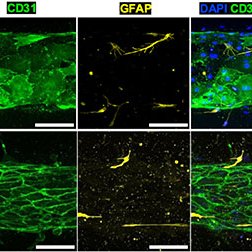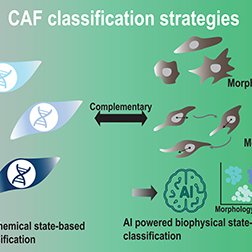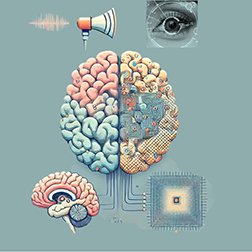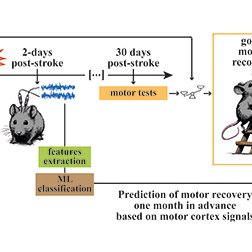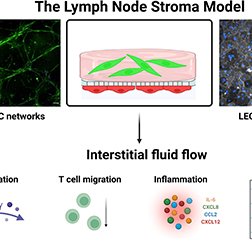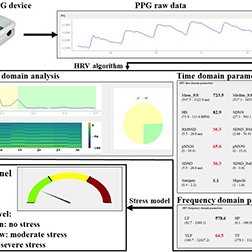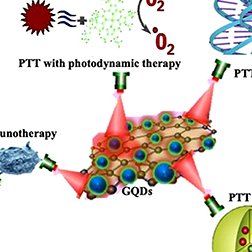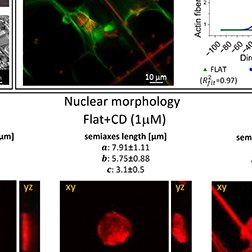
APL Bioengineering
@aplbioeng
Followers
316
Following
203
Media
138
Statuses
742
A leading open access journal from @AIP_Publishing for the Bioengineering and Biomedical Research Communities EIC: @JustinCooperWh1
Joined September 2022
Lee et al used a brain-on-a-chip model to show that in Alzheimer’s, toxic tau protein makes brain support cells (astrocytes) overly contract, squeezing vessels and blocking brain waste clearance. Learn more 👇 .
pubs.aip.org
The glymphatic system is a critical pathway for clearing metabolic waste from the brain by mediating cerebrospinal fluid and interstitial fluid exchange. In Alz
0
0
2
The study uses an organ-chip to reveal how shear stress regulates inflammation in arterial endothelial cells and involvement of primary cilia and YAP as therapeutic targets for atherosclerosis. Learn more 👇 .
pubs.aip.org
This study describes the development of a microfluidic chip model of the coronary artery endothelium and its use to examine the mechanism through which pulsatil
0
0
3
Classification of Differentially Activated Groups of Fibroblasts Using Morphodynamic and Motile Features. Learn more 👇 .
pubs.aip.org
Fibroblasts play essential roles in cancer progression, exhibiting activation states that can either promote or inhibit tumor growth. Understanding these differ
0
1
1
Metronomic photodynamic therapy (mPDT) selectively kills tumor cells by marking them with photosensitizers and applying low-intensity light to induce programmed cell death. #scilight. Learn more 👇 .
pubs.aip.org
Flexible, implantable diode selectively targets photosensitized rat hepatoma cells with minimal local thermal damage and immune response.
0
0
1
A tiny, wire-free light device implanted in the body can now fight deep cancers like liver tumors—offering new hope through gentle, long-term photodynamic therapy. #MedTech, #TranslationalMedicine . Learn more 👇 .
pubs.aip.org
Metronomic photodynamic therapy (mPDT) is a method of continuously delivering low-intensity light to a cancer lesion. This approach does not require high-intens
0
0
0
We explore cerebellum role in multisensory integration with spiking neural networks that replicated clinical findings, supporting the cerebellum's critical contribution to integrating sensory inputs. Learn more 👇 .
pubs.aip.org
The remarkable ability of the human brain to create a coherent perception of reality relies heavily on multisensory integration—the complex process of combining
0
0
1
LFPs recorded 2 days post-stroke predicted 1-month motor recovery in mice. Post-stroke neural activity, particularly from the contralesional hemisphere, was key to accurate outcome prediction. Learn more 👇 .
pubs.aip.org
Stroke remains a leading cause of long-term disability, underscoring the urgent need for effective predictors of motor recovery. Understanding the electrophysio
0
1
3
Interstitial fluid flow altered T cell egress from an engineered lymph node stroma model regardless of magnitude, while only high magnitude flow induced inflammation and changes to stromal morphology. Learn more 👇 .
pubs.aip.org
The lymph node (LN) performs essential roles in immunosurveillance throughout the body. Developing in vitro models of this key tissue is of great importance to
0
1
1
A wearable PPG-based HRV device harnessing machine learning for real-time stress monitoring enhances mental health care, teletherapy quality, and early mental illness screening. Learn more 👇.
pubs.aip.org
Prolonged exposure to high-stress environments can lead to mental illnesses such as anxiety disorders, depression, and posttraumatic stress disorder. Here, a we
0
0
0
The mechanisms of #CardiogenicPulmonaryEdema, #AcuteRespiratoryDistressSyndrome (#ARDS), and the effects of #PEEP unravelled bya microvascular model of fluid transport in the alveolar septa
pubs.aip.org
We present a microvascular model of fluid transport in the alveolar septa related to pulmonary edema. It consists of a two-dimensional capillary sheet coursing
0
0
0
Strokes are highly debilitating, affecting millions of people worldwide every year. #scilight. Learn more 👇 .
pubs.aip.org
Extracellular brain signals obtained a few days after a stroke could be used to predict the degree of spontaneous recovery a month later.
0
0
0
The use of #graphenequantumdot in #photothermaltherapy - an effective technology against #cancer - read more below 👇 .
pubs.aip.org
The rapid development of powerful anti-oncology medicines have been possible because of advances in nanomedicine. Photothermal therapy (PTT) is a type of treatm
0
0
0
#ICYMI: engineers control cell stemness via 3D micro-fabricated lattice substrate in @APLBioeng paper from @polimi. #stemcells #biomaterials
pubs.aip.org
Mechanical stimuli from the extracellular environment affect cell morphology and functionality. Recently, we reported that mesenchymal stem cells (MSCs) grown i
0
0
0
I'm a Survinin! New @APLBioeng paper from @YonghoBae2 and @UB_BME reveals survivin's impact on the modulation of cell phenotype & proliferation. #mechanobiology
pubs.aip.org
Stiffened arteries are a pathology of atherosclerosis, hypertension, and coronary artery disease and a key risk factor for cardiovascular disease events. The in
0
1
7
Survivin of the fittest! Check out the role of survivin in vascular mechanics and disease @Jacobs_Med_UB #hydrogel, #atherosclerosis, #vascular, #biomechanics
pubs.aip.org
Vascular dysfunction is a common cause of cardiovascular diseases characterized by the narrowing and stiffening of arteries, such as atherosclerosis, restenosis
0
0
0
Efficient, cost-effective, and highly tunable molecular engineered DNA microladder-based soft hydrogels - super cool! (@KAUST) #DNA, #hydrogels, #biomaterials, #molecularengineering
pubs.aip.org
Soft, biocompatible, and tunable materials offer biomedical engineers and material scientists programmable matrices for a variety of biomedical applications. In
0
1
3

